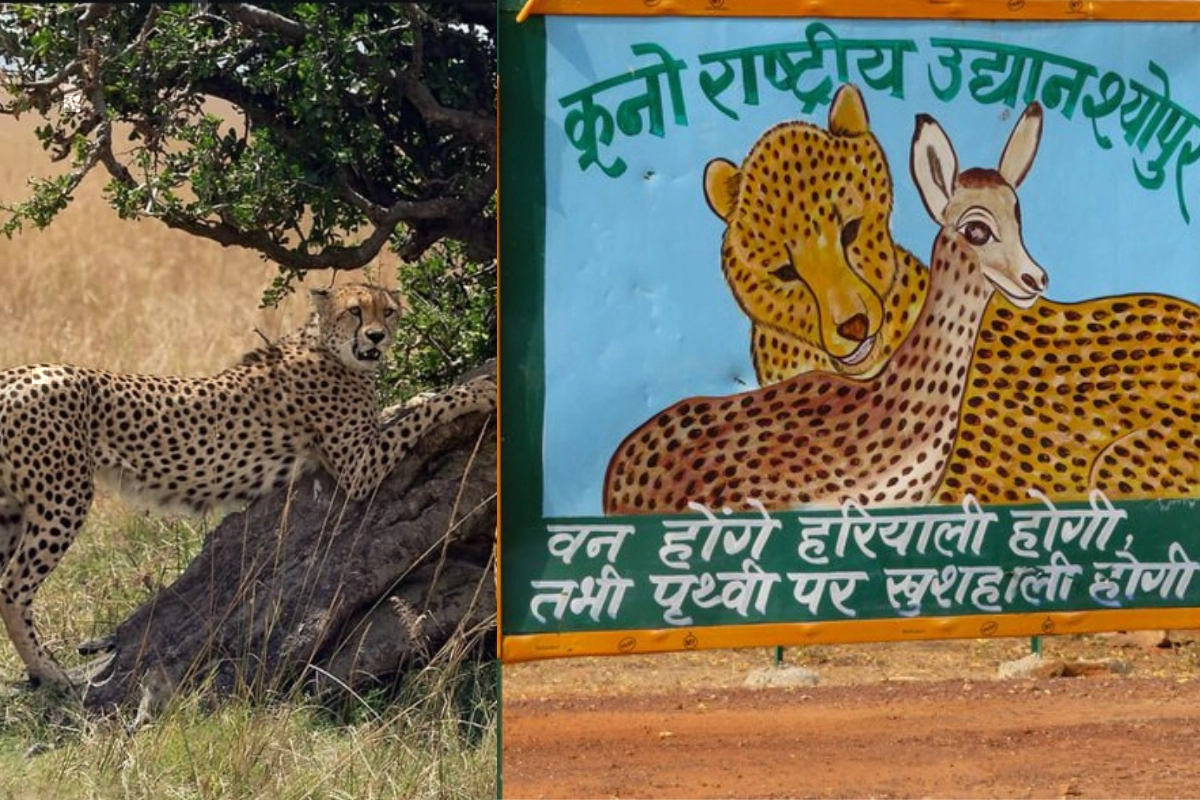Madhya Pradesh: The eight African cheetahs will shortly move into Kuno Palpur National Park, a 748 square kilometre area in the immense woodland environment of Madhya Pradesh, when they arrive in India on Saturday. The area is quite close to the Sal forests of Koriya, now in Chhattisgarh, where the native Asiatic Cheetah was maybe last seen almost 70 years ago, yet it is devoid of any populated areas.
Kuno is one of the rare wildlife places in the nation
A sizable portion of India is regarded as a cheetah habitat, taking into account the climatic conditions most suited for the wild cat, with the exception of high altitudes, beaches, and the northeastern region. As a result, a decade ago, the idea was being explored for a number of different places.
Between 2010 and 2012, ten sites in Madhya Pradesh, Chhattisgarh, Rajasthan, Gujarat, and Uttar Pradesh were surveyed. Kuno was found to fit the bill later on. According to a study by the Wildlife Institute of India and Wildlife Trust of India (WTI) based on climatic factors, prey densities, predator populations, and historical range, it was the most favoured habitat.
Although there is little possibility that cheetahs will encounter humans because they do not hunt humans or attack large cattle, the wild cat, also known as the fastest land mammal, typically views space as a vital factor.
Also Read: Nawab Malik: “Dealt With Haseena Parker, Therefore He Cannot Be Innocent”, ED
Animals in India are unfortunately in danger due to rising population density and shrinking open grasslands.
Kuno is perhaps one of the rare wildlife places in the nation where 24 or so settlements and their domesticated cattle were completely relocated from inside the park decades ago. The former settlement locations and their agricultural areas are now managed as savannah habitats since grasses have occupied them.
Existence of rival predators together
According to the government’s proposal, Kuno presents the opportunity to house four large cats in India, including tigers, lions, leopards, and cheetahs, and to ensure their past-style coexistence. Although Gujarat is home to the only remaining population of lions, Kuno was first suggested as a potential secondary habitat.
However, if a sufficient prey base and other resources are present, it is known for both to cohabit in the wild. Authorities claimed that future tiger colonisation, lion reintroduction, and prey restoration are all realistic possibilities for the Kuno terrain.
Also Read: Malaika Or Alia? Different Styles Same Shirt, Who Do You Think Looked Better In Balenciaga?
The national park, according to estimates from the government, can currently hold up to 21 cheetahs, and if appropriate efforts are made and the prey base is maintained, it may even be able to hold 36 of them.
The goal is to develop a meta-population of cheetahs at Kuno and work toward translocating the wild cats to other chosen areas if the current translocation is successful.
Keep watching our YouTube Channel ‘DNP INDIA’. Also, please subscribe and follow us on FACEBOOK, INSTAGRAM, and TWITTER.
